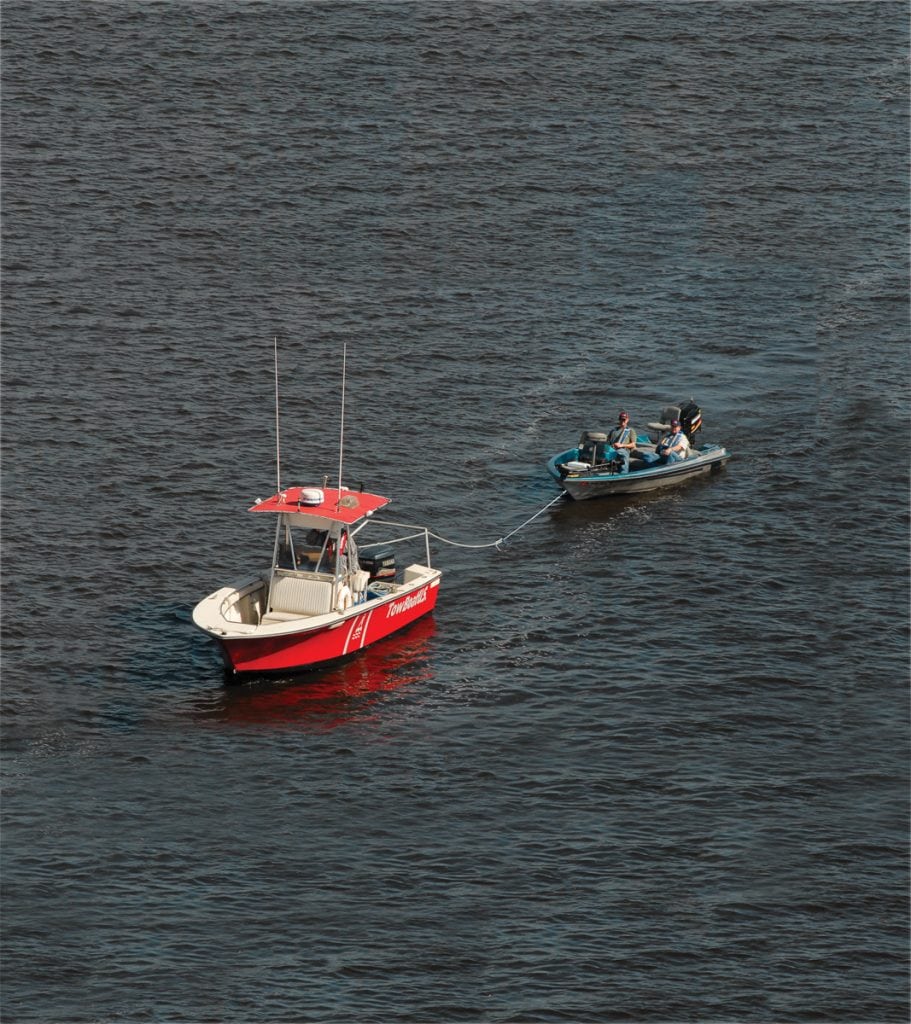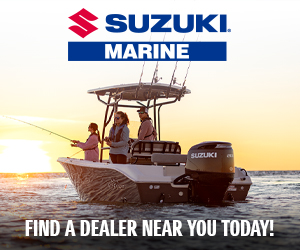Top Twelve Towing Tips
Be a better boater with these towing tips.
When discussing “the laws of the sea” down at the yacht club’s Tiki bar, the big one will invariably be your duty to render assistance to those in trouble while on the water. Probably the most common assistance will be in the form of a tow. Despite the proliferation of commercial towing companies, there will be times when a fellow mariner can arrive on the scene faster than a professional first responder. Let’s take a look at what you need to know in order to protect not only yourself but also those you are trying to help with these towing tips.
Towing basics
Providing a non-emergency tow (i.e. boat and occupants are not in any immediate danger) may be the most common form of assistance, but that doesn’t mean it’s commonly done correctly. Towing is not simply a matter of tossing Bubba your ratty dock line and goosing the throttle. Before offering a tow, there are things that you as the captain will be required to know both from a practical and legal responsibility standpoint. No set of guidelines will be able to cover every variable you’ll encounter, but the following towing tips should be useful for almost any towing situation.
Top 12 Towing Tips
- Take a moment to assess the situation when arriving at the disabled vessel. Everyone wants to lend a hand whenever possible, but you have the responsibility to do so without placing yourself in danger or worsening the situation of the other vessel. For example, a boat that’s aground could have sustained significant damage, causing it to sink once towed into deeper water.
- When towing, have the disabled boat pass the tow line over to the tow boat. This lets the towing vessel easily cast off once the tow is completed. A nylon anchor rode is ideal for this as it is typically easily available, is long (allowing for length adjustments) and provides good shock-absorbing qualities due to the nylon’s stretchiness.
- If the towing vessel has an on-centerline towing fixture (pylon for skiing, etc.), it might make a good place to attach a tow line assuming it is robust enough. Otherwise, you’ll want to make a towing bridle. A simple bridle can be made by running a stout line between your two stern cleats. Attach the towing line to it using a bowline so that the loop can slide along your bridle. Keep the bridle loose enough to provide room for the tow line to slide freely but not so loose that it can come in contact with your propeller.
- Establish communications before starting the tow and keep in constant touch throughout the tow. Using your VHF on a “working” or non-emergency channel will likely be the most common means of communication, however, cell phones or even hand signals will work. For the latter, make sure everyone understands the basic hand signals to be used (stop, slow down, speed up, release the tow, etc.)
- Once the tow line is attached to both vessels, slowly take the slack out of the tow line until the full load is achieved at which point you can throttle up to a suitable towing speed.
- Always agree on where the disabled vessel will be towed prior to heading out. It’s also a good idea to have a contingency plan in place in case something goes wrong
(deteriorating weather, low fuel, etc.). - Maintain a “tow watch” during the tow, both to make sure the towed vessel is doing okay and to ensure the tow line doesn’t foul your propeller.
- If towing in open water, increase the length of the tow line. This not only puts some safe distance between the two vessels but also increases the shock-absorbing qualities of your tow rope. If towing in larger waves, adjust the tow line so that both boats ride in sync with each other at the wave crests, troughs, etc. Boats that are out of sync while towing can experience significant shock loading causing boat damage(ripped out cleats, for example) and injury to those on board.
- Shorten up tow lines in calm waters or when maneuvering in close quarters (such as approaching a boat ramp or dock). Always remember that just because the tow boat stops, that doesn’t mean the towed boat will quickly do the same.
- Provide chafe protection for the tow line anywhere it touches the tow or towed boat. Old fire hose makes great chafe gear, but even something as simple as a fish towel, old piece of canvas or a T-shirt will work in a pinch. On the opposite side of the equation, always keep a sharp knife handy should you need to sever the towline in the event of an emergency.
- Make the tow as smooth as possible for the towed vessel. Try different speeds to find the best speed for both the boat being towed and the conditions.
- Never hesitate to decline to offer a tow if circumstances make it unsafe: bad weather, rough seas, your boat is too small, etc. The bottom line is that while you are obliged to provide as much help as possible in the event of an emergency, you also don’t want to attempt something that is beyond your capabilities, a situation that could create civil liability for you, even if follow these towing tips. If the crew is stranded but not in imminent danger, the most prudent course of action may be to simply stand by and provide moral support until a professional tow company arrives to assistBy Frank Lanier, Southern Boating January 2018
















My wife and I have a pontoon that we love to dock at the lake. While we are out on the lake, every once in a while we will see someone stranded and have to tow them back to the dock. You give a great tip to shorten and lengthen the tow rope lengths based on water conditions.
Frank Lanier
I feel really lucky to read your site article. that is really so much helpful and so unique for a new or an old reader. especially I fear for a boat journey. but still, now, I,m really so much ready to read that. because I did not know a lot of things before. but still, now I,m getting a new power from my inner world. and I will be going for a boat journey with my family and friends.